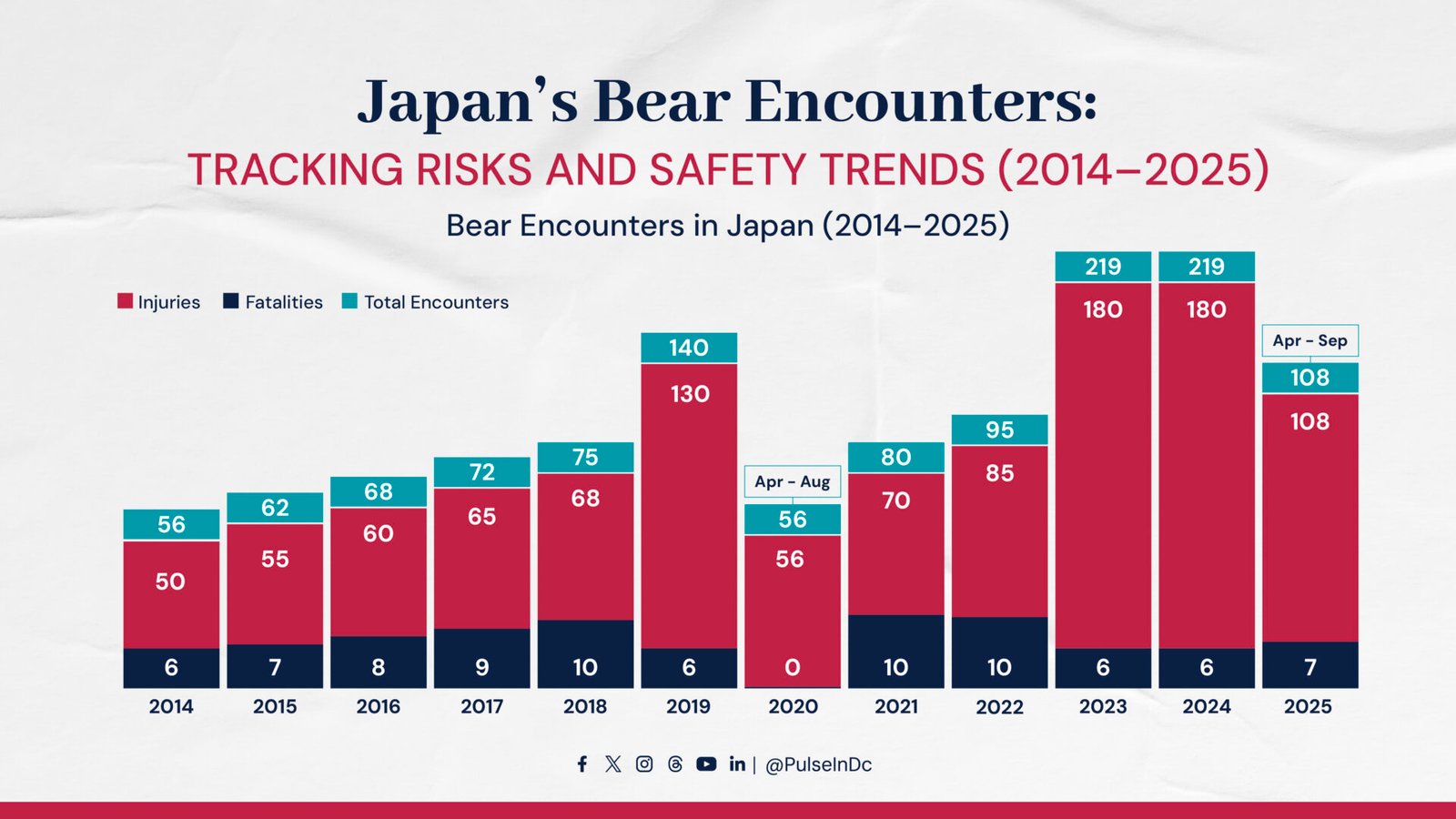
Japan’s Bear Encounters: Tracking Risks and Safety Trends (2014–2025)
Over the past decade, Japan has experienced a notable increase in bear attacks, with government statistics highlighting both the growing frequency of encounters and the associated risks to human life.
Between 2014 and 2025, the number of recorded bear incidents has risen dramatically, peaking in 2023 with over 200 encounters, causing numerous injuries and six fatalities.
In 2025 alone, there have already been seven deaths in the first nine months, illustrating a concerning upward trend.
The primary species involved are the Asiatic black bear (Ursus thibetanus), found across Honshu and Shikoku, and the Ussuri brown bear (Ursus arctos lasiotus), primarily inhabiting Hokkaido.
Experts attribute the rise in attacks to a combination of factors including habitat loss due to urban expansion, climate-driven food shortages like poor acorn harvests, and growing bear populations that increasingly venture into human settlements in search of food.
Mapping the species’ ranges against incident hotspots reveals the northeastern regions and Hokkaido as particularly high-risk areas.

